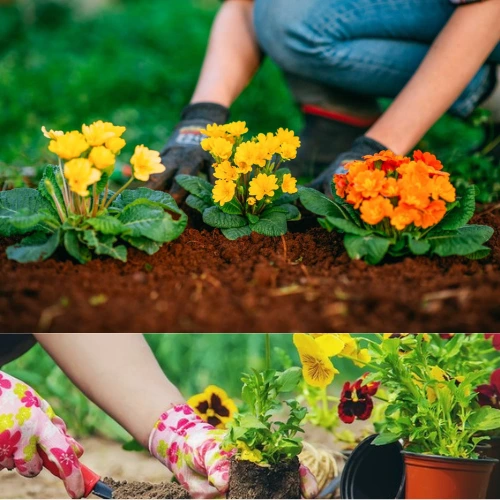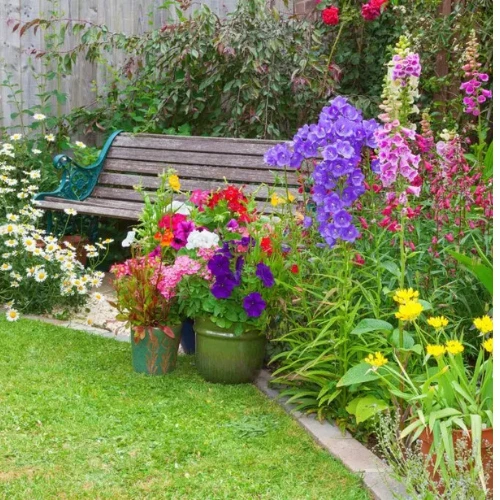Flowers are essential in landscape design — they bring seasonal color, support biodiversity, and define the character of a garden. Whether you’re a home gardener or a landscape architect, understanding how to use flowering plants effectively can elevate the quality of any outdoor space.

Types of Flowers in Landscaping
1. Annuals
These garden plants bloom for one season and offer vibrant, temporary color.
Examples: Zinnia, Petunia, Marigold.
2. Perennials
They come back each year, creating long-term structure in garden beds.
Examples: Echinacea, Daylily, Lavender.
3. Biennials
They grow foliage the first year and bloom the second.
Examples: Foxglove, Sweet William.
4. Bulbs
Planted once, they flower seasonally and are ideal for naturalized plantings.
Examples: Tulips, Daffodils, Alliums.
How Landscape Designers Use Flowers
- Borders: Layering heights and bloom colors for visual depth.
- Mass plantings: Strong impact with minimal maintenance.
- Pollinator zones: Attract bees, butterflies, and beneficial insects.
- Shade gardens: Using plants that thrive in low light.
- Fragrance design: Placing scented plants near seating or pathways.
🧠 Tip: Use the color wheel to combine complementary or analogous flower colors for a balanced design.

How to Choose the Right Flowering Plants
- Climate compatibility
→ Use the USDA Hardiness Zone Map to guide your selections. - Soil type & drainage
→ Conduct a basic pH test before planting. - Sunlight exposure
→ Group plants based on sun/shade tolerance. - Maintenance needs
→ Consider whether deadheading or division is required. - Seasonal interest
→ Mix early, mid-, and late bloomers for a continuous display.
Planting & Maintenance Tips
- Amend soil with compost before planting.
- Water in the early morning to prevent fungus.
- Apply mulch to reduce weeds and retain moisture.
- Prune and deadhead regularly to promote more blooms.
- Rotate annuals each year to prevent soil exhaustion.
Native and Sustainable Choices
Favor native flowering plants whenever possible — they require less water, adapt easily, and support local ecosystems. Learn more via the Royal Horticultural Society.
FAQ – Common Questions About Garden Flowers
What are the easiest flowers to grow?
Marigolds, Calendula, and Nasturtiums are beginner-friendly and resilient.
How do I attract pollinators?
Choose nectar-rich varieties like bee balm, lavender, and salvia. Avoid pesticides.
Can I mix perennials and annuals?
Absolutely. Perennials add structure, annuals bring seasonal flexibility.
Conclusion
Integrating flowers into a garden design isn’t just about beauty—it’s about balance, biodiversity, and functionality. With the right selection and planning, flowers can transform your outdoor space into a vibrant, living canvas.


